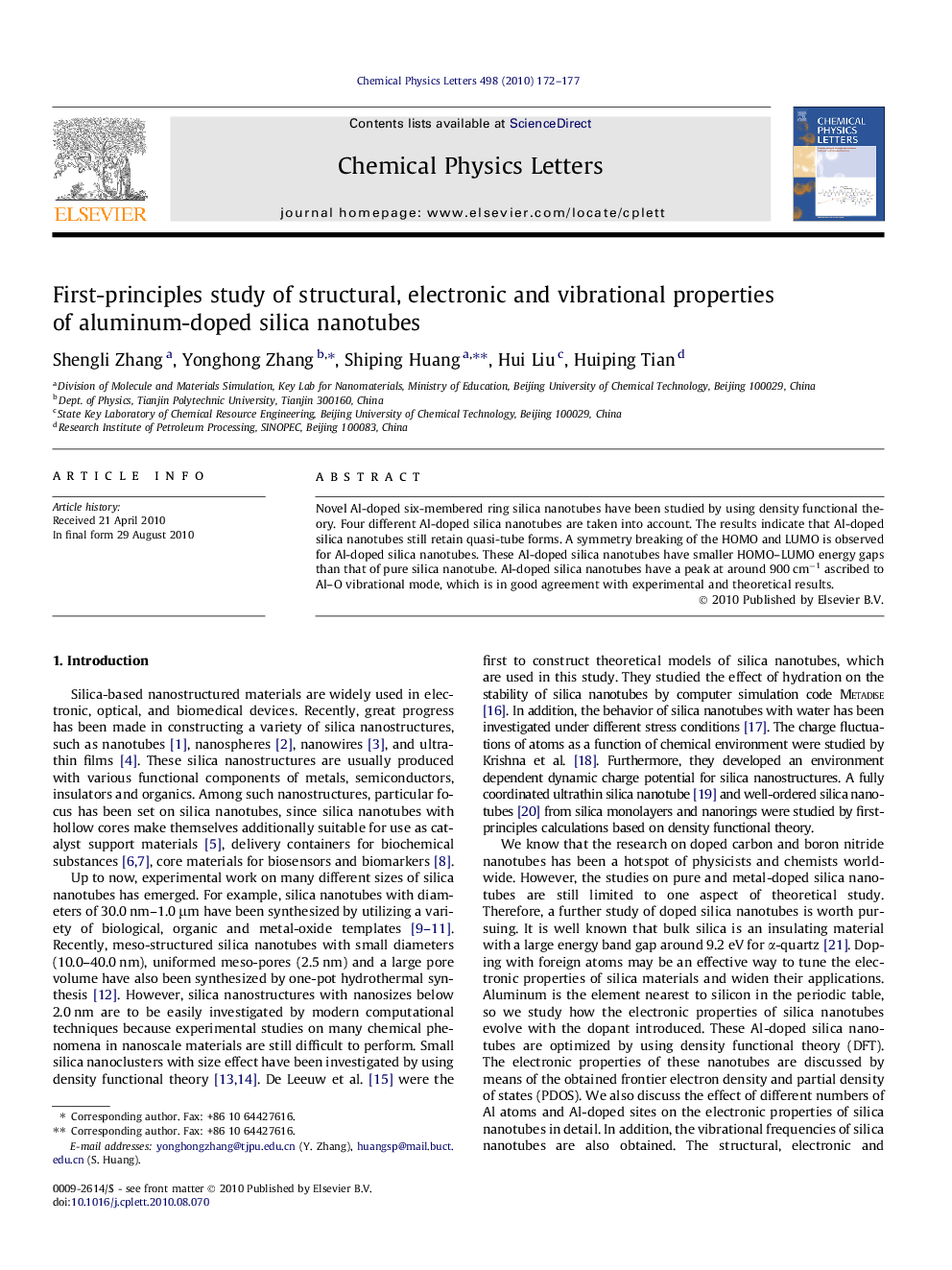| Article ID | Journal | Published Year | Pages | File Type |
|---|---|---|---|---|
| 5385096 | Chemical Physics Letters | 2010 | 6 Pages |
Novel Al-doped six-membered ring silica nanotubes have been studied by using density functional theory. Four different Al-doped silica nanotubes are taken into account. The results indicate that Al-doped silica nanotubes still retain quasi-tube forms. A symmetry breaking of the HOMO and LUMO is observed for Al-doped silica nanotubes. These Al-doped silica nanotubes have smaller HOMO-LUMO energy gaps than that of pure silica nanotube. Al-doped silica nanotubes have a peak at around 900Â cmâ1 ascribed to Al-O vibrational mode, which is in good agreement with experimental and theoretical results.
Graphical abstractThe electronic properties of pure and Al-doped silica nanotubes are investigated by using density functional theory. The figure shows that the isosurfaces of the highest occupied molecular orbital (HOMO) and the lowest unoccupied molecular orbital (LUMO) of the silica nanotubes are changed significantly due to doping with Al atoms.Download high-res image (166KB)Download full-size imageResearch highlights⺠Among Al-doped nanotubes, 1Al-ENT has a smallest HOMO-LUMO gap. Addition of Al with different numbers of atoms or different Al-doped sites should be responsible for the reduction of the gap. This effect may provide a valuable pathway of controlling the HOMO-LUMO gap by appropriately doping metal atoms or metal oxides inside silica nanotube. ⺠Doping of Al atoms could lead to significant symmetry breaking of the HOMO and LUMO for 1Al-ENT, 2Al-NT and 2Al-ENT. The symmetry breaking is accompanied by a transfer charge between the doping of Al atoms and sililca nanotube. ⺠It should be noted that there is no peak at 900 cmâ1 for pure silica nanotube, while Al-doped silica nanotubes have a weak peak at around 900 cmâ1, which is ascribed to Al-O vibration mode.
